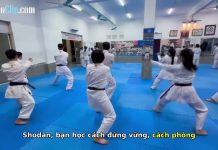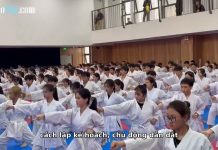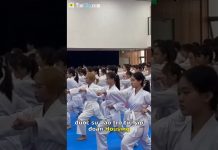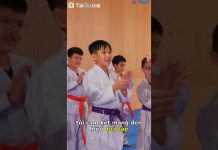In the world of martial arts, few feats are as visually stunning and mentally demanding as breaking dragon swords. For any karate student, training to compete in such a challenge is the ultimate test of power, focus, and technique. This unique and high-level skill pushes practitioners beyond traditional kata and kumite, into a realm where both body and mind must operate in perfect harmony.
In this article, we explore how a karate student competes in breaking dragon swords, what dragon swords are, the necessary training, and what this achievement represents in the martial arts community.
What Are Dragon Swords in Karate Demonstrations?
Dragon swords are not weapons used in combat but symbolic blades often used in martial arts demonstrations to represent strength, danger, and precision. These blades may be made of tempered steel, reinforced wood, or composite materials with sharp edges—not typically for cutting, but to test breaking techniques under controlled conditions.
Breaking such swords requires:
-
Explosive power
-
Perfect technique
-
Accurate targeting
-
Mental control and confidence
This is not a beginner’s demonstration—only the most prepared karate students attempt it.
The Path of a Karate Student
For a karate student to reach this level of demonstration, years of disciplined training are required. This includes:
1. Foundational Strength and Conditioning
A karateka must first develop:
-
Core strength
-
Arm and leg power
-
Joint flexibility
-
Bone conditioning (especially hands and forearms)
These are essential for any form of breaking (tameshiwari), especially when dealing with dense or sharp objects like dragon swords.
2. Kihon and Technique Refinement
Precision matters more than brute force. A successful break involves:
-
Proper stance (Kiba Dachi, Zenkutsu Dachi)
-
Sharp striking technique (Shuto, Seiken, Empi)
-
Use of hip rotation (koshi no kaiten) for maximum power transfer
3. Mental Focus and Visualization
Breaking a dragon sword is not only physical—mental readiness is crucial. Students train with visualization techniques, meditative breathing, and mental rehearsal to overcome fear and hesitation.
Competing in Dragon Sword Breaking
A. Rules and Safety
In martial arts exhibitions or competitions where breaking dragon swords is featured, safety is paramount. The student must:
-
Wear protective gear if required
-
Perform under supervision
-
Break the sword in a controlled and rehearsed strike
-
Show no signs of hesitation or poor form
Scoring Criteria (when judged competitively):
-
Clean break
-
Technical execution
-
Composure and spirit (Zanshin)
-
Showmanship and control
B. Strike Techniques Used
Common techniques for sword breaking include:
-
Shuto Uchi (Knife-hand strike)
-
Empi Uchi (Elbow strike)
-
Seiken Tsuki (Forefist punch)
-
Kansetsu Geri (Joint kick) for advanced leg breaks
The student usually strikes a mounted or suspended sword, depending on the style and event setup.
Real-Life Example: Karate Student Achieving the Impossible
At a recent international martial arts event in Asia, a 17-year-old karate student from Vietnam competed in the dragon sword breaking demonstration. With just one shuto strike, he split a reinforced dragon sword in half—earning a standing ovation and inspiring martial artists around the world.
His training included:
-
4 years of Shotokan Karate
-
Daily makiwara (striking post) training
-
Mental coaching with breathing techniques
-
Breaking over 100 tiles as preparation
This is the power of dedication and proper guidance.
Benefits of Training for Dragon Sword Breaking
While not all karate students will compete in such feats, training for them offers many benefits:
1. Enhanced Mental Discipline
Learning to overcome fear and perform under pressure improves confidence and clarity in all areas of life.
2. Stronger Body Mechanics
Training for breaking requires correct alignment, posture, and energy transfer—all of which improve overall karate technique.
3. Recognition and Respect
Competing in high-level demonstrations builds reputation in the karate community and may open doors for international recognition or teaching opportunities.
Risks and Precautions
Attempting to break dragon swords without proper training can lead to serious injuries. Karate students must:
-
Follow their sensei’s guidance
-
Never attempt unsupervised demonstrations
-
Build up to this level slowly and safely
-
Understand the difference between demonstration and combat
Summary of Training Steps
Here is a quick breakdown for any karate student aiming to compete in dragon sword breaking:
| Step | Description |
|---|---|
| 1. Conditioning | Strengthen hands, forearms, and core muscles |
| 2. Precision Training | Sharpen specific strikes like shuto and empi |
| 3. Mental Prep | Practice breathing, visualization, and mental resilience |
| 4. Progressive Breaking | Start with boards and tiles before swords |
| 5. Safety Training | Learn correct safety protocols and injury prevention |
Conclusion
The journey of a karate student who competes in breaking dragon swords is a testament to the human spirit, martial arts mastery, and deep mental discipline. While it is a visually dramatic feat, it’s built on years of silent practice, inner strength, and technical precision.
Whether you are a beginner admiring such demonstrations or an advanced student looking to try it one day, always remember: power comes from mastery, not from force. With the right training, guidance, and mindset, any karateka can rise to incredible challenges—even breaking a dragon sword.



















